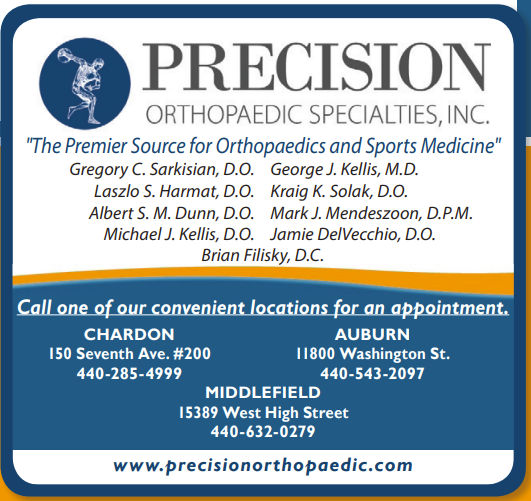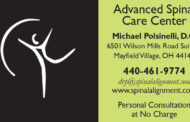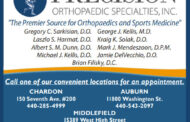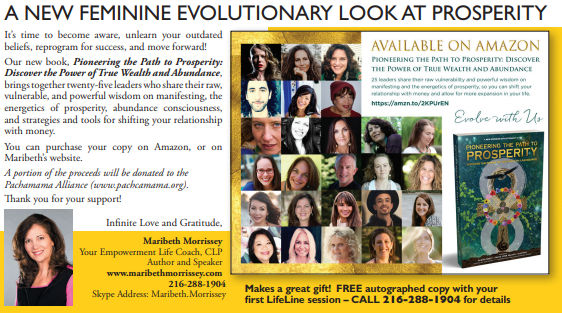By Dr. Kraig K. Solak
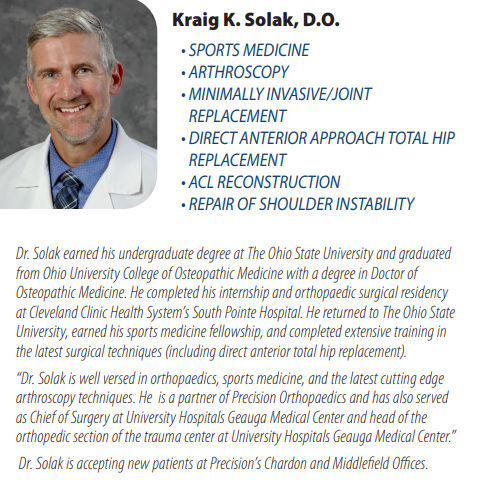
“All at once, summer collapsed into fall” -Oscar Wilde
As summer wanes into fall, we put away our beach blankets and sunscreen and get ready for the leaves’ color change. So also as we move from summer into the autumn of our lives, there are discernible changes in our bodies.
“50 is the new 40”
As we age there are more creeks, pops and snaps when waking and taking the first few steps. Age related changes are unavoidable, but with improved fitness and exercise, activity modifications, medications and overall healthy living, some of the symptoms can be mitigated.
In general women accumulate calcium in the bones up until the age of 30 and thereafter these stores begin to dwindle. Hormonal changes following menopause can lead to osteoporosis and subsequent fragility fractures. Screening tests can include a DEXA scan or skeletal survey to determine your overall bone quality. Deterioration can be slowed. Speak to your physician about available options.
Joint pain and Arthritis can be improved
As we age it is not as easy to maintain a specific level of fitness. An extra 10 pounds of body weight will cause a 5 fold increase on joint stresses. A diet high in protein and complex carbohydrate is essential. It is imperative to avoid drinking sugar (soda and other drinks high in simple carbohydrate/high fructose corn syrup), avoiding “sweets”, and staying away from white bread and pasta.
Veggies should be the main food choice followed by high-protein grains (Quinoa, Farro) and lean meat protein sources (chicken breast, Salmon and limited red meat). Omega-3 fatty acids (fish oil, flaxseed oil) are also important free radical scavengers that can help stave joint deterioration.
Anti-inflammatories
Advil and Aleve can be helpful, but carry risk with prolonged use. An excellent holistic alternative is turmeric. The active ingredient is curcumin. This is a naturally occurring spice that does not affect the stomach lining or harm the kidneys. It is available at most pharmacies.
Activity
Low impact exercises like yoga and Pilates can be well tolerated and can help improve balance. The better balance you have later on in life the less likely you are to fall and suffer significant injury. Closed chain exercises like cycling and the elliptical are great for cardiovascular conditioning and easier on joints. Resistance training is also important and can help limit osteoporosis. I would recommend using light weights, high repetitions, and smooth controlled motion. Proper lifting technique is crucial and personal trainers can be very helpful in this regard.
With a healthy lifestyle, proper exercise, nutrition and involvement of your health care team, you can expect healthier joints, less pain and a more active lifestyle intothe winter of your life.

